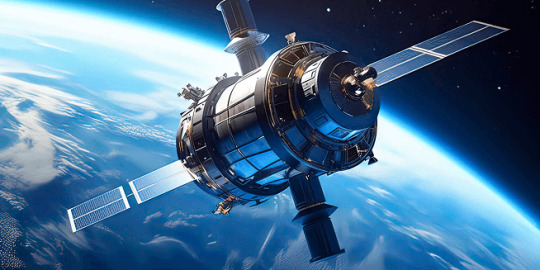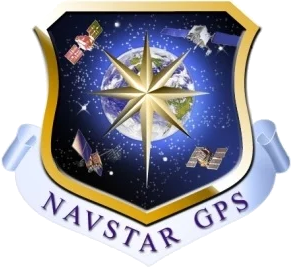#Global Positioning System (GPS)
Explore tagged Tumblr posts
Text



I still have some Pictures from the Asian Defense and Security (ADAS) Event last Year of 2022 that I haven’t released to the Public yet, will try to do so now whenever I can like these ones, the special Artillery Munitions by Elbit Systems. As always, I will be putting better Resolution Versions of these Pictures on Wikimedia Commons later after this Posting
#elbit systems#asian defense and security#adas 2022#stylet guided mortar#guided mortar munition gmm#155 mm caliber howitzer#super-high explosive s-he#world trade center wtc#silver bullet guidance kit#precision guidance kit pgk#global navigation satellite system gnss#global positioning system gps#m71 howitzer#autonomous truck mounted howitzer system atmos#philippine army pa
0 notes
Text


#RelocationTime
Mountainous Parts of the Northern Hemisphere.
#Relocation Time#GPS#Global Positioning System#Fall Season#Autumn#Color Splash#Nature Photography#Landscapes#Mountains View#Hiking Trails#Altitude Life#ECCC#Environment and Climate Change Canada#NCC#Nature Conservancy of Canada#Mountainous Parts of the Northern Hemisphere#Canada#The RavenKeeper
522 notes
·
View notes
Text
Fundamental physics—let alone quantum physics—might sound complicated to many, but it can actually be applied to solve everyday problems. Imagine navigating to an unfamiliar place. Most people would suggest using GPS, but what if you were stuck in an underground tunnel where radio signals from satellites were not able to penetrate? That's where quantum sensing tools come in. USC Viterbi Information Sciences Institute researchers Jonathan Habif and Justin Brown, both from ISI's new Laboratory for Quantum-Limited Information, are working at making sensing instruments like atomic accelerometers smaller and more accurate so they can be used to navigate when GPS is down.
Continue Reading.
115 notes
·
View notes
Text
SIRIUSXM SATELLITE RADIO GPS
#gps#SiriusXM#siriusxm#SIRIUSXM#GPS#GLOBAL POSITIONING SATELLITE SYSTEM#SATELLITE RADIO#SIRIUSXM SATELLITE RADIO#🛰️
20 notes
·
View notes
Text
Satellites: Their Orbits, Tracking Systems, and Essential Uses

Satellites: Their Positions, Tracking, and Importance
Satellites have become an essential part of modern life, orbiting Earth and providing us with services ranging from communication and navigation to weather forecasting and space exploration. As of 2024, thousands of active satellites are circling our planet, each performing a specific role to enhance the quality of life on Earth. This article delves into the positioning of satellites, how they are tracked, what they track, and the significance of their roles.
Types of Satellite Orbits and Their Positions
Satellites are positioned in various orbits depending on their intended functions. These orbits determine how close the satellite is to Earth, how fast it moves, and what areas it covers.
Low Earth Orbit (LEO): Altitude: 180 km to 2,000 km Satellites in LEO include most Earth observation satellites, the International Space Station (ISS), and some communication satellites. These satellites are closer to the Earth, enabling them to capture high-resolution images. Functions: Used for imaging, remote sensing, and some communication purposes. Examples: ISS, Earth observation satellites like Landsat.
Medium Earth Orbit (MEO): Altitude: 2,000 km to 35,786 km Satellites in MEO are mainly used for navigation. This orbit offers a good balance between coverage and latency. Functions: GPS satellites and other global navigation systems. Examples: GPS, GLONASS, and Galileo satellites.
Geostationary Orbit (GEO): Altitude: 35,786 km above the equator Satellites in GEO move at the same rotational speed as Earth, meaning they stay fixed over one location on Earth. These are mostly communication and weather satellites. Functions: Used for television broadcasts, weather monitoring, and some types of communication. Examples: Weather satellites (GOES series), telecommunication satellites.
Highly Elliptical Orbit (HEO): Orbit shape: An elongated orbit with one point closer to Earth (perigee) and another point much farther away (apogee). Functions: Ideal for regions at high latitudes, providing prolonged coverage over areas like Russia and parts of Canada. Examples: Molniya satellites for communication in Russia.
How Satellites Are Tracked
The sheer number of satellites in space, combined with space debris, means tracking them is essential to avoid collisions and ensure their functionality. Ground stations and dedicated space agencies continuously monitor satellites. Several methods are used to track satellites:
Radar and Ground-Based Systems: Ground stations use radar to track satellites in LEO. These systems bounce radio waves off the satellite and measure the time it takes for the signal to return. By doing this repeatedly, they can track a satellite's location and speed.
Global Positioning System (GPS): Satellites in higher orbits like MEO or GEO are tracked using onboard GPS receivers. GPS helps calculate the satellite’s position and relay that data back to Earth.
Optical Tracking: Telescopes and cameras are used to visually observe satellites in higher orbits. This method is particularly useful for tracking objects that do not emit radio signals or need to be monitored for their physical characteristics.
Space Surveillance Networks: Agencies such as the U.S. Space Surveillance Network (SSN) and similar organizations in other countries continuously monitor satellites and space debris. They catalog objects and issue alerts for potential collisions.
What Satellites Track
Satellites are equipped with various sensors, cameras, and instruments to track a wide array of data on Earth, in space, and beyond:
Weather and Climate Data: Satellites such as NOAA’s GOES series monitor weather patterns, hurricanes, and long-term climate changes. They provide crucial data for meteorological services.
Earth Observation: Satellites like Landsat capture high-resolution images of Earth's surface. These images are used for mapping, agricultural planning, disaster response, and environmental monitoring.
Navigation Signals: GPS and other GNSS (Global Navigation Satellite Systems) satellites send signals that are used for navigation by smartphones, vehicles, ships, and airplanes worldwide.
Communication: Satellites facilitate global communication by relaying TV, radio, and internet signals across vast distances.
Space Exploration: Space telescopes like the Hubble Space Telescope track distant galaxies, nebulae, and black holes, helping scientists study the universe.
Military Surveillance: Many satellites are designed for defense purposes, tracking missile launches, military movements, or spying on potential threats.
Number of Satellites in Space
As of 2024, there are approximately 8,000 operational satellites orbiting Earth. The exact number fluctuates as new satellites are launched and old ones are decommissioned. Additionally, space agencies and private companies like SpaceX continue to launch large satellite constellations, such as Starlink, which alone has over 5,000 satellites in orbit for global internet coverage.
The Usefulness of Satellites
Satellites have become indispensable in modern life, serving a wide variety of purposes that impact everyday activities and critical global functions:
Key Functions of Satellites:
Communication: Satellites enable long-distance communication by transmitting data, television, and internet services. Without them, global broadcasting and real-time communication in remote areas would be impossible.
Navigation: Systems like GPS help millions of people navigate in real-time. They are also vital for the functioning of aviation, maritime travel, and even agricultural practices.
Earth Observation: Satellites provide high-resolution imagery of Earth, helping with disaster management, urban planning, agriculture, and environmental monitoring. For instance, they can track deforestation or observe glaciers' melting rates.
Weather Forecasting: Weather satellites provide the data needed for accurate predictions, storm tracking, and climate monitoring. This information is critical for preparing for natural disasters like hurricanes or floods.
Scientific Research and Exploration: Space telescopes and interplanetary satellites gather data on space phenomena, expanding our understanding of the universe. Satellites also conduct scientific experiments in the microgravity of space.
Defense and Security: Satellites are used for military surveillance, early-warning systems, and missile detection, playing a crucial role in national security.
Satellite Highlights in Brief:
Types of orbits: LEO, MEO, GEO, HEO, each serving different purposes.
Tracking methods: Radar, GPS, optical tracking, and space surveillance networks.
Data tracked by satellites: Weather, Earth observation, navigation signals, space exploration, and military surveillance.
Number of active satellites: Approximately 8,000.
Key roles: Communication, navigation, weather forecasting, Earth observation, scientific research, and defense.
In conclusion, satellites are essential tools for global communication, navigation, monitoring Earth's environment, and scientific discovery. As technology advances and the number of satellites continues to grow, their impact on our daily lives will only increase. Whether improving how we predict the weather, navigate through traffic, or explore the universe, satellites will continue to be a critical resource for humanity.
Go To How Satellites Work and What They Track
#satellite orbits#satellite tracking#satellite functions#low earth orbit#geostationary orbit#medium earth orbit#space technology#GPS satellites#communication satellites#weather satellites#Earth observation#satellite uses#satellite positions#how satellites work#space surveillance#satellite navigation#satellite networks#satellite importance#global navigation systems
7 notes
·
View notes
Text
Female Inventions (Day 3) Gladys West (Oct 27, 1930 - Present)

Born in Sutherland Virginia, inducted into the United States Air Force Hall of Fame, and played a vital role in creating the modern GPS system. Read more about Gladys West here and the creation of the GPS system here!
2 notes
·
View notes
Text
GPS (Global Positioning System) Tracking System Market Size, Share, Trends, Demand, Future Growth, Challenges and Competitive Analysis
"Global GPS (Positioning System) Tracking System Market - Size, Share, Demand, Industry Trends and Opportunities
Global GPS (Global Positioning System) Tracking System Market, By Type (Covert GPS Trackers, Standalone Tracker, Advance Tracker), Components (GPS Loggers, Personal GPS Trackers, Real-Time GPS Trackers), Deployment Type (Commercial Vehicle, Cargo and Container, Others), Industry (Automotive and aerospace, Healthcare, Transportation, Government and Defense, Others) – Industry Trends.
Access Full 350 Pages PDF Report @
**Segments**
- **Type:** The GPS tracking system market can be segmented based on the type of systems available, such as standalone trackers, OBD trackers, and advanced trackers integrated with smartphones. - **End-User:** The market can also be divided by end-user industries, including transportation and logistics, automotive, healthcare, agriculture, and others. - **Region:** Geographically, the market can be segmented into North America, Europe, Asia-Pacific, Latin America, and Middle East & Africa, each with its own market dynamics and growth opportunities.
**Market Players**
- **Garmin Ltd.:** Garmin is a prominent player in the GPS tracking system market, known for its innovative GPS navigation and wearable technology solutions. - **Trimble Inc.:** Trimble offers a range of GPS tracking devices tailored for industries like construction, agriculture, and fleet management. - **TomTom International BV:** TomTom provides GPS navigation and mapping products, along with GPS tracking solutions for businesses and consumers. - **Calamp Corp.:** Calamp specializes in telematics and GPS tracking solutions for fleet and asset management, serving a wide range of industries. - **Queclink Wireless Solutions:** Queclink focuses on designing and manufacturing GPS tracking devices for vehicle tracking, asset tracking, and personal tracking applications.
The GPS tracking system market is witnessing significant growth due to the increasing demand for real-time location tracking and monitoring across various industries. Standalone trackers are popular for personal tracking and small business applications, offering simplicity and portability. On the other hand, OBD trackers are preferred by automotive and fleet management companies for vehicle diagnostics and tracking. Advanced trackers integrated with smartphones provide enhanced features like geofencing, route optimization, and remote monitoring, catering to the evolving needs of consumers and businesses alike.
In terms of end-users, the transportation and logistics sector is a major driver of market growth, leveraging GPS tracking systems to optimize routes, enhance driver safety, and improve overall operational efficiency. The automotive industry is also aThe GPS tracking system market is a dynamic and rapidly expanding industry that caters to a wide range of sectors and end-users. The segmentation of the market based on the type of systems available offers diverse solutions to meet specific needs. Standalone trackers are popular for individual consumers and small businesses looking for simple and portable tracking solutions. These devices are often used for personal tracking, asset tracking, and monitoring of loved ones or valuable items. OBD trackers, on the other hand, are commonly used in the automotive industry for vehicle diagnostics, maintenance tracking, and fleet management. These devices plug into the OBD-II port of vehicles and provide real-time data on vehicle performance and location. Advanced trackers integrated with smartphones are gaining popularity due to their enhanced features such as geofencing, route optimization, and remote monitoring capabilities. These advanced systems offer comprehensive tracking solutions for businesses and consumers looking for more sophisticated functionalities.
The end-user segmentation of the GPS tracking system market reflects the diverse industries that benefit from location tracking and monitoring solutions. The transportation and logistics sector is a significant driver of market growth, as companies in this industry rely heavily on GPS tracking systems to optimize routes, improve fleet management, and ensure timely delivery of goods. By using GPS technology, transportation and logistics companies can enhance operational efficiency, reduce fuel consumption, and increase overall productivity. The automotive industry is another key end-user segment of the GPS tracking system market, with a growing demand for tracking solutions in vehicle security, theft recovery, and driver monitoring. GPS tracking systems are also widely used in the healthcare sector for patient monitoring, asset tracking, and emergency response services. These systems help healthcare providers improve patient care, streamline workflow processes, and ensure the safety and security of medical assets.
From a regional perspective, the GPS tracking system market is witnessing robust growth in regions such as North America, Europe, Asia-Pacific, Latin America, and the Middle East & Africa. North America and Europe are mature markets for GPS tracking systems, driven by technological advancements, stringent regulations, and**Global GPS (Global Positioning System) Tracking System Market Analysis:**
- **Segments:** The GPS tracking system market offers diverse solutions based on the type of systems available, including standalone trackers, OBD trackers, and advanced trackers integrated with smartphones. Each type caters to different needs, from personal tracking to vehicle diagnostics and fleet management. The market is further segmented by end-user industries such as transportation and logistics, automotive, healthcare, agriculture, and more, showcasing the widespread applications of GPS tracking systems. Geographically, North America, Europe, Asia-Pacific, Latin America, and the Middle East & Africa present unique market dynamics and growth opportunities for GPS tracking system providers.
- **Market Players:** Key players in the GPS tracking system market include Garmin Ltd., Trimble Inc., TomTom International BV, Calamp Corp., and Queclink Wireless Solutions. These companies offer innovative GPS tracking solutions tailored for various industries such as construction, agriculture, healthcare, and fleet management. Their products range from standalone trackers to advanced devices with advanced features like geofencing and route optimization, meeting the evolving needs of consumers and businesses alike.
The GPS tracking system market is witnessing significant growth due to the increasing demand for real-time location tracking and monitoring across diverse industries. Standalone trackers, OBD trackers, and advanced trackers integrated with smartphones cater to different user needs, from personal tracking to fleet management. The transportation and logistics industry drives market growth by leveraging GPS tracking systems to optimize routes, enhance driver safety, and
The report provides insights on the following points:
Market Penetration: Comprehensive information on the product portfolios of the top players in the GPS (Positioning System) Tracking System Market.
Product Development/Innovation: Detailed insights on the upcoming technologies, R&D activities, and product launches in the market.
Competitive Assessment: In-depth assessment of the market strategies, geographic and business segments of the leading players in the market.
Market Development: Comprehensive information about emerging markets. This report analyzes the market for various segments across geographies.
Market Diversification: Exhaustive information about new products, untapped geographies, recent developments, and investments in the GPS (Positioning System) Tracking System Market.
Table of Content:
Section 01: Executive Summary
Section 02: Scope of The Report
Section 03: Research Methodology
Section 04: Introduction
Section 05: Market Landscape
Section 06: Market Sizing
Section 07: Five Forces Analysis
Section 08: Market Segmentation by Product
Section 09: Market Segmentation by Application
Section 10: Customer Landscape
Section 11: Market Segmentation by End-User
Section 12: Regional Landscape
Section 13: Decision Framework
Section 14: Drivers and Challenges
Section 15: Market Trends
Section 16: Competitive Landscape
Section 17: Company Profiles
Section 18: Appendix
The following are the regions covered in this report.
North America [U.S., Canada, Mexico]
Europe [Germany, UK, France, Italy, Rest of Europe]
Asia-Pacific [China, India, Japan, South Korea, Southeast Asia, Australia, Rest of Asia Pacific]
South America [Brazil, Argentina, Rest of Latin America]
The Middle East & Africa [GCC, North Africa, South Africa, Rest of the Middle East and Africa]
This study answers to the below key questions:
What are the key factors driving the GPS (Positioning System) Tracking System Market?
What are the challenges to market growth?
Who are the key players in the GPS (Positioning System) Tracking System Market?
What are the market opportunities and threats faced by the key players?
Browse Trending Reports:
Diet and Nutrition Apps Market Text-To-Speech Market Water Soluble NPK Fertilizers Market Sound Enclosure Commercial Beverage Blender Market Bone Conduction Hearing Aids Market Beeswax Market Angiographic Catheter Market Bathroom - Toilet Assist Devices Market Digital Assistant Market Cercarial Dermatitis Market Landau-Kleffner Treatment Market Hand Holes Market
About Data Bridge Market Research:
Data Bridge set forth itself as an unconventional and neoteric Market research and consulting firm with unparalleled level of resilience and integrated approaches. We are determined to unearth the best market opportunities and foster efficient information for your business to thrive in the market. Data Bridge endeavors to provide appropriate solutions to the complex business challenges and initiates an effortless decision-making process.
Contact Us:
Data Bridge Market Research
US: +1 614 591 3140
UK: +44 845 154 9652
APAC : +653 1251 975
Email: [email protected]"
0 notes
Text
What is GPS ?
GPS stands for Global Positioning System. It is a satellite-based navigation system that allows users to determine their precise location and track their movement on the Earth's surface. The system provides information on latitude, longitude, altitude, and the current time at the user's location.
The GPS system consists of a network of satellites in orbit around the Earth. These satellites transmit signals to GPS receivers on the ground or in devices like smartphones, cars, and other navigation systems. The GPS receiver uses the signals from multiple satellites to calculate the user's precise location through a process called trilateration.
The accurate positioning information provided by GPS has a wide range of applications, including navigation for vehicles, aircraft, and ships, tracking and mapping, surveying, and various location-based services such as geotagging in photos and finding nearby points of interest. GPS has become an essential tool in both civilian and military applications, significantly impacting various aspects of daily life.
Link : What is GPS

1 note
·
View note
Text

GPS/GLONASS/GALILEO CERAMIC PATCH ANTENNA
Eteily's Ceramic Patch Antenna is a low profile, dielectric antenna element specifically designed for 1575.42MHz L1 GPS, 1602MHz GLONASS & Galileo L1 1575.42MHz applications.The flat patch antenna incorporates a Square design for GPS right-hand circular polarization wave reception. These antennas has excellent stability and sensitivity through the use of high performance ceramic materials well suited for GPS applications and ships with double-sided adhesive tape for ease in mounting to the ground plane.
GPS-GNSS ANTENNA
A GPS-GNSS antenna is designed specifically for Global Positioning System (GPS) and Global Navigation Satellite System (GNSS) applications. These antennas receive signals from a constellation of satellites to determine precise positioning, velocity, and timing information. We are also manufacturer and suppliers of GPS GNSS antenna in Delhi, Mumbai, Chennai, Hyderabad, Pune, Bangalore, Kolkata and Ahmedabad.
Eteily is the world class manufacturer of GNSS Global Navigation Satellite System Antenna, which includes GPS, GLONASS, Galileo, BeiDou IRNSS Antennas for navigation tracking. We design for various applications such as GPS Tracker, Marine application, Railway Application, Asset Tracking and many more.
#High Performance GPS Antenna#GPS Antenna by Eteily-Excellent Performance#GPS antenna manufacturer in india#GPS antenna manufacturer in china#GPS antenna#Global Positioning System Antenna manufacturers#Gps Patch Antenna#GPS antenna manufacturer#Top Gps Antenna Manufacturers#Top Gps Antenna Manufacturers in india#GPS Antenna Types#gps antenna price in india#gps antenna design#gps antenna in telecom#gps antenna for mobile phones#Gps Active Antenna Manufacturers#GPS Marine Antenna Manufacturer#GPS & GNSS Antennas#GPS Internal & External Antennas#GPS Antennas and Accessories#Garmin GPS Antenna#GPS Antenna Price#gps antenna for car#GPS Receiver & Antenna#gps tracker antenna#gps pcb antenna#gps antenna supplier in india#gps suppliers in india#Top Gps Tracking Device Manufacturers in india
0 notes
Text
What is GPS and How does it work?
GPS, or Global Positioning System, is a satellite-based navigation system used worldwide. It allows us to determine our exact location, speed, and time with exceptional precision. By receiving signals from multiple satellites, GPS receivers triangulate our position, making it an essential technology for navigation and location-based services. To learn more please visit here: https://www.opennaukri.com/what-is-gps-and-how-does-it-work/
0 notes
Text
Yeah, I get the question (and sometimes the brand names are jarring!) but the specific alternatives here sounded weird for me. If this is supposed to be set in the 2020s I'd say "she put the address into her phone map" (perhaps "phone map app", or just "map app" because apps are supposed to be on phones anyway*) or maybe something like "asked her phone for directions" - which would be conveniently ambiguous between Google, Yandex, Waze, and a bunch of other more marginal options. (I do have to admit that "she set her Google Maps to give directions" would sound a bit like product placement unless it's deliberately intended to be a detailed look. I'd be fine with something like "she put the address into Google Maps", though.)
When I read "she put the address in her GPS" I'm imagining a standalone GPS device that was 1) advanced enough to put an address into (I believe there used to be specific CDs with the databases...) and 2) not yet just part of the smartphone. So, yes, 00s to mid-10s (and it was probably a Garmin). (Side-note: technically, GPS is supposed to be another brand rather than a generic term (competing with e.g. Glonass), and modern "GPS" devices actually use several of those systems at once! But the genericization on that one had bolted long ago and if you say "GPS" you'd be understood better than if you tried to look for actual generic terms.)
More generically (...somewhat following on to the GPS point just above), sometimes you have a problem where the brand name is so much more familiar that using the generic name for whatever service it is would just look weird! If it would even be intelligible at all.
Suppose that you don't want to say Twitter in your 2024 book because you don't think your 2026 or 2036 readers would know what Twitter is. (I'm using Twitter as an example because it's one case where it would actually be plausible that in a few years there'd be people unfamiliar with the brand name, but conveniently it also makes the following point easier to state.) What would you use? "Microblog" (or, worse, "microblogging service") would sound ridiculous. "Social media" is too generic (unless you want your readers to assume it's Facebook). "Mastodon" is even more specific (and might not necessarily be a recognizable thing in 2030 either). "X" could easily be just as unintelligible in the future (especially if it's later renamed to something else again) and in the meantime it makes you look like a Musk fanboy. So pretty much you'd need to either make up a brand (and hope it's not the actual name of something unrelated) or give in and say Twitter.
OTOH if your characters are using Twitter (or Google - Maps or otherwise - or Siri, or Facebook, or Discord, or indeed Tumblr... or, in one unfortunate example that comes to mind, MySpace) in, say, 2231 (or some other blatantly-far-future date), then either you're deliberately making a point about the persistence of existing brands, or you should probably change that to something less time-specific, and/or something made up for the story. (I'll give "GPS" a pass, unless it's set on another planet. Even then it's probably not that bad of a choice.)
And as a final side-note - I do love it when a story set in a particular time period uses authentic technology and recognizable brand names for that time period.
It's great if your characters in 2006 are posting on MySpace and putting addresses in MapQuest! (Though they probably wouldn't be doing it on their phones...) If anything it's more jarring if the story uses a brand name (or other technology) that didn't actually exist in the relevant time period (no, Rowling, there were no PlayStations in 1994, or not in the UK anyway).
(BTW, I voted for the third option in the poll, because it was a convenient "it depends" option that didn't really hinge on whether Google and GPS were in fact the same thing. Which they aren't, but not for the reason that the OP was trying to imply.)
*) unless you're Discord and don't like the word "bot" for some reason
Reading a book now that in the same few paragraphs mentioned Siri, google maps, and another app all at once, and I was kind of overwhelmed by how specific that is—to Apple, to right now, etc. I got bogged down in wondering if that section would be legible in 15 years, like if Siri goes away or is renamed or no one uses Apple phones.
What are your thoughts on books including specific app or brand names, which might end up dating it (like all books with “twitter” in them are now Pre 2024 books)?
Aka, would you prefer to write/read “she set her google maps to give directions” or “she put the address in her gps.”
#GPS#global positioning system#Google Maps#Yandex Maps#Guru Maps#my dad often uses that last one because it works even with inconsistent internet access#I'm sure there's a ton of other navigation apps that I just don't happen to know much about#Twitter#microblog#microblogging#as far as I'm concerned as long as it's on twitter.com it's still Twitter#the MySpace one was Times Like This strip 35 if you were wondering#if you don't get the Discord reference it's because they just changed their “bot” label on webhook posts to “app” and I don't understand wh#found via foone
337 notes
·
View notes
Text
FUN FACT: GPS has an official logo

and it's this terrible MMORPG badge sort of thing.
(It says "NAVSTAR GPS" because the original name was Navstar GPS. It might still technically be so, although Wikipedia thinks it has been renamed to just the Global Positioning System)
530 notes
·
View notes
Note
It's always hilarious when I see the dates on your posts because in NZ we go day/month/year.
So when I see your posts, for example one I saw just now dated 5/9/25, I'm like "oh cool post from the future". Then my brain catches up and goes "oh wait no that's not right, time travel doesn't exist. Amercian date duh"
(Please never change your date system, I enjoy the moment of confusion)
Can we talk about how weird the US is?
Most of the world uses DD/MM/YYYY, but the US uses MM/DD/YYYY
Most of the world uses Celsius, the US uses Fahrenheit.
Most of the world is metric, but the US won't let go of Imperial units.
The US is the only wealthy nation without universal healthcare.
Most of the world uses 220–240V electricity, the US uses 120-Volt
I read that only the US and New Zealand allow direct-to-consumer pharmaceutical ads.
The US is the only nation that ties many aspects of adult life (housing, employment, loans, insurance rates) to a secretive algorithm-driven credit score system.
Many countries vote on weekends or have national holidays for elections. The US votes on a Tuesday - and it's not even a federal holiday.
College sports are not an industry ($18-$20 billion per year!) anywhere but in the US.
The weirdest difference about Americans...is that they're largely unaware of how weird the US is among other nations.
It's funny. I was looking at the above and thought, I should make a list of things about the US I'm proud of! Some of the ways it is positively exceptional!
So I started making a list...and had to face the reality that Trump is attacking all of them.
1. Constitutionally Protected Free Speech
The US has some of the strongest legal protections for freedom of expression in the world - including unpopular, offensive, or political speech.
Unlike many democracies, "hate speech" laws don’t exist in the same form, and government censorship is much more restricted.
Trump hasn't dismantled free speech (yet), but he attacked the free press as "the enemy of the people," encouraged and filed lawsuits against journalists, and floated ideas like expanding libel laws to target critics. While not policy, this rhetoric chills speech and emboldens authoritarianism. His attempts to illegally de-fund public broadcasting are nakedly political, motivated by his distaste for the content of NPR and PBS, and in violation of the First Amendment.
2. Invention Culture
The U.S. is uniquely good at turning wild ideas into world-changing innovations: the airplane, the internet, the smartphone, GPS, social media, electric cars, AI, and yes, even the moon landing.
American culture prizes risk-taking and rewards failure as a learning process - rare in most countries.
Trump's immigration limits (like the H-1B visa crackdown) restricted access to top global talent, which could weaken innovation long-term. His attacks on institutions of higher education will dramatically slow technological innovation and destroy research programs. The brain drain to other nations of technical, scientific expertise has already started.
3. Higher Ed Research Powerhouse
The U.S. is home to nearly all of the top global research universities and attracts more international students than any other country.
American universities lead in medical, technological, and scientific breakthroughs.
Trump slashed funding for scientific research and gutted federal advisory panels.
Anti-intellectualism and attacks on elite universities (especially during COVID and around DEI issues) undermined trust in American academia and discouraged international students.
He also restricted foreign researchers, especially from China.
4. Peaceful Transfers of Power (Mostly)
The US had a long history of peaceful democratic transitions, without coups, assassinations, or military takeovers - uncommon for such a large and diverse nation...and then came Trump.
Trump's refusal to accept the 2020 election results, pressuring officials to overturn it, and inciting the January 6th insurrection are considered by legal scholars and bipartisan commissions as an unprecedented attack on American democracy.
5. National Parks System
The US pioneered the idea of preserving vast, stunning natural landscapes for public enjoyment - Yellowstone was the world's first national park.
The National Parks system is the gold standard for conservation tourism.
Trump opened millions of acres of protected lands to drilling, mining, and commercial use, including rolling back protections at Bears Ears and Grand Staircase-Escalante.
His administration also weakened the Endangered Species Act and gutted environmental regulations.
6. Civil Society Strength
The US has a thriving network of grassroots organizations, non-profits, advocacy groups, and independent media that hold institutions accountable and mobilize citizens.
Trump has attacked watchdog groups and frequently tried to delegitimize civil society institutions, especially those related to voting rights, environment, and racial justice.
His administration also attempted to weaponize the IRS and DOJ against political opponents.
7. Free & Open Internet
Despite pressures, the US has generally protected a free and open internet, with few restrictions on access or content compared to most other nations.
...until Trump’s FCC, under Ajit Pai, repealed net neutrality protections in 2017. Though the internet remained accessible, open access and fair competition were weakened.
9. Entrepreneurial Ecosystem
The US leads in startup creation, venture capital funding, and unicorn companies (startups worth $1B+).
It’s one of the few places where a person can come from nothing and build a global empire in their garage (literally - see Apple, Amazon, HP).
Trump's immigration restrictions hurt startups' access to talent and investment (e.g. STEM immigrants, startup visas).
Trade wars with China and uncertainty in international markets also created instability for small and medium-sized innovators.
10. Strong Judicial Review
The US Supreme Court and lower courts have real power to strike down laws and check the other branches - rare in many democracies.
Trump respected judicial review when it served him, but attacked judges who ruled against him, calling them "Obama judges" or "so-called judges."
He also appointed record numbers of federal judges, many of whom were rated "not qualified," and explicitly chosen for ideological loyalty, raising long-term concerns about judicial independence.
11. Religious Pluralism
While religion is prominent in public life, the U.S. also guarantees freedom of religion and supports a wildly diverse religious landscape - everything from Orthodox Jews to Buddhists to Wiccans to atheists.
Trump has embraced Christian nationalism and banned entry from multiple Muslim-majority countries (the "Muslim Ban"), which was later struck down and modified...until he revived it in 2025.
Rhetoric and policies have consistently signaled preference for one religious identity, undermining pluralism.
12. Robust Refugee and Immigrant Absorption (Historically)
Though flawed, the US has welcomed more immigrants than any other country in history and granted millions paths to citizenship, jobs, and education.
Trump cut legal immigration by nearly 50%, reduced refugee admissions to historic lows, ended DACA protections, and dismantled the asylum process.
His administration separated families, created a climate of fear, and made it harder for immigrants to naturalize.
Don't get me started on his ICE raids.
13. Civil Rights Legacy
The US gave birth to one of the most influential civil rights movements of the 20th century — and inspired others around the world.
Figures like Martin Luther King Jr., Rosa Parks, and John Lewis are global symbols of peaceful resistance and justice.
Trump dismantled Obama-era civil rights protections, including for transgender individuals, voting rights enforcement, and police reform oversight.
He attacked movements like Black Lives Matter and used federal forces against peaceful protesters (Lafayette Square, 2020).
14. Strong Local Government
States and localities in the US have real, constitutionally protected autonomy, enabling political diversity and experimentation (think: marijuana legalization, universal basic income pilots, or charter school models).
Trump has repeatedly threatened "blue states" and tried to withhold federal funding from states or cities that disagreed with him politically (e.g., sanctuary cities, COVID policies).
Undermining federalism in this way weakened the traditional balance of state and federal power.
15. Disaster Response Innovation
FEMA and the U.S. military lead some of the fastest and best-coordinated global disaster responses - often being first on the ground for earthquakes, hurricanes, and humanitarian crises abroad.
Trump’s handling of Hurricane Maria in Puerto Rico was widely condemned as negligent and racially biased.
His COVID-19 response lacked national coordination and downplayed science, weakening U.S. disaster response credibility.
His FEMA director was unaware there is a hurricane season.
So...most of the things about my country of which I was still proud...are being erased.
(But I'm glad our date formatting is entertaining.)

69 notes
·
View notes
Text
Zero: as a reward for completing this Decision Game, you will be granted access to [GPS] Carlos: GPS… Junpei: whats that? Akane: Global Positioning System. Through satellite data, you're able to see exactly where you are on the earth's surface. Carlos: so that's the power of GPS… Zero: with [GPS] enabled, you should be able to leave us a five star review on Google Maps. Or whatever you think is fair Junpei: I'd rather have a Gigantic Penis Simulator
98 notes
·
View notes
Text
As US shuts doors to global talent, India must open its own wider
America’s strength has long come from attracting the world’s brightest minds and backing them with deep pockets and bold research institutions. But in a stunning act of self-sabotage, President Donald Trump is dismantling that advantage—visa by visa, budget cut by budget cut. For India, this could be a turning point. For the US, it’s a slow-motion collapse of one of its greatest engines of innovation.Harvard University, long considered a global leader in education and research, has had its authority to enrol international students revoked. Over $2.7 billion in federal research funding has been frozen. MIT has cut back on graduate admissions and laid off research staff. The University of California system is suing to protect funding. Projects in cancer research, climate science, and quantum computing are being disrupted or shut down entirely. Although a federal judge has temporarily blocked the administration’s actions against Harvard, the chilling effect remains. The message to international students and researchers is clear: they are no longer welcome. And it’s not just about visas—this is about dismantling the infrastructure that made the US a science and technology superpower.

This decline is especially tragic given the historic accomplishments of American research institutions. Public investments in university science have given us not just medical miracles and digital revolutions, but entire industries. Funding for National Institutes of Health (NIH) and National Science Foundation (NSF) helped spawn biotech, cleantech, and nanotech. DARPA grants for defence R&D gave us GPS and the early internet.
These are the roots of the US innovation economy. Undermining them is like ripping out the foundation of a skyscraper mid-construction.More than half of Silicon Valley’s startups had at least one immigrant founder. A third of those were Indian. My research at Duke, Harvard, and UC-Berkeley documented that Indian entrepreneurs have founded more Silicon Valley startups than immigrants from the UK, China, and Taiwan combined. These companies didn’t just create wealth—they created entire industries and hundreds of thousands of American jobs.That pipeline is now shutting down.
Years of restrictive immigration policies, chronic green card backlogs, and now open political hostility have driven away many of the world’s best minds. Enrolment by international students is in steep decline. Top-tier researchers are heading for friendlier shores.Now, Trump is gutting the very universities that have fuelled America’s innovation economy for generations. The same institutions that gave birth to Google, GPS, and gene editing are laying off faculty and cutting lab budgets. NIH and NSF grants—the lifeblood of American science—are being frozen or slashed. And students who once saw the US as the pinnacle of opportunity are looking elsewhere.The economic cost is massive. International students contribute over $40 billion annually to the US economy.
They pay full tuition, rent housing, buy food, and many go on to launch companies and file patents. Research funding supports hundreds of thousands of jobs across every state and underpins the industries of tomorrow.The strategic cost is even greater. America’s lead in artificial intelligence, biotech, and clean energy depends on its ability to attract and retain global talent. Undermining this system doesn’t just weaken universities—it threatens the US’s position in the global economy.And it’s not just the research funding that’s under attack—it’s the people who bring that research to life.
For decades, the US enjoyed the greatest free lunch in the history of education and entrepreneurship as the smartest students from India, China, and across the globe came to study here. They didn’t just learn—they stayed, built companies, and created jobs. Now, Indian students are rethinking whether the US is still the best place to study or build a future. With its increasingly uncertain immigration policies and declining openness, it is no longer the obvious first choice.India, in contrast, is becoming more capable of absorbing and advancing global talent. Its research institutions are demonstrating world-class capabilities. The country has produced affordable vaccines, pioneered frugal engineering, and launched space missions on a fraction of Nasa’s budget.
It has a growing startup ecosystem, access to global capital, and one vital asset China lacks: a democratic system that supports openness, debate, and collaboration.India is not yet ready to replace the US as a global research superpower—but it is well-positioned to inherit the talent and energy America is turning away. But seizing the opportunity will require more than goodwill. India will need to invest in its research infrastructure, improve its regulatory environment, and incentivise public-private collaboration. It will need to create pathways for Indian-origin scientists abroad to return—and for foreign researchers to come. Most importantly, it must treat research not as a luxury, but as a national priority.Trump could help make India great again.
25 notes
·
View notes